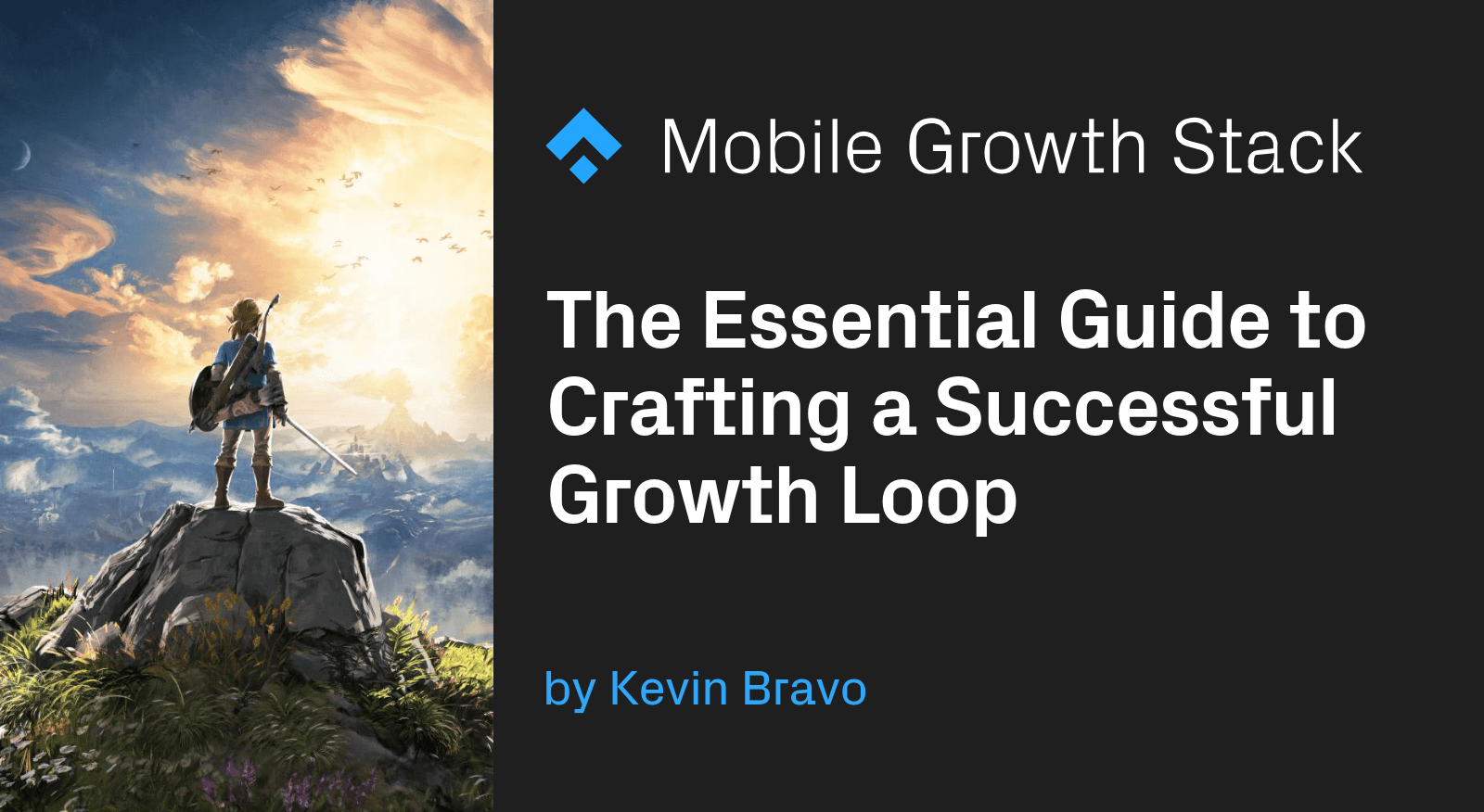
Based on personal experience, I want to share what I have found to be the top requirements for success when creating a growth loop.
These different steps are what any product manager/marketing team / or curious developer should focus on to make sure they’re bringing maximum efficiency and best capabilities for their loop to actually drive impact on the acquisition, retention and monetization layers.
Quick Background Check
Growth Loops are closed systems where the input generates output. This output can be invested back into the input. There are growth loops that serve different value creations including new users, returning users, etc..
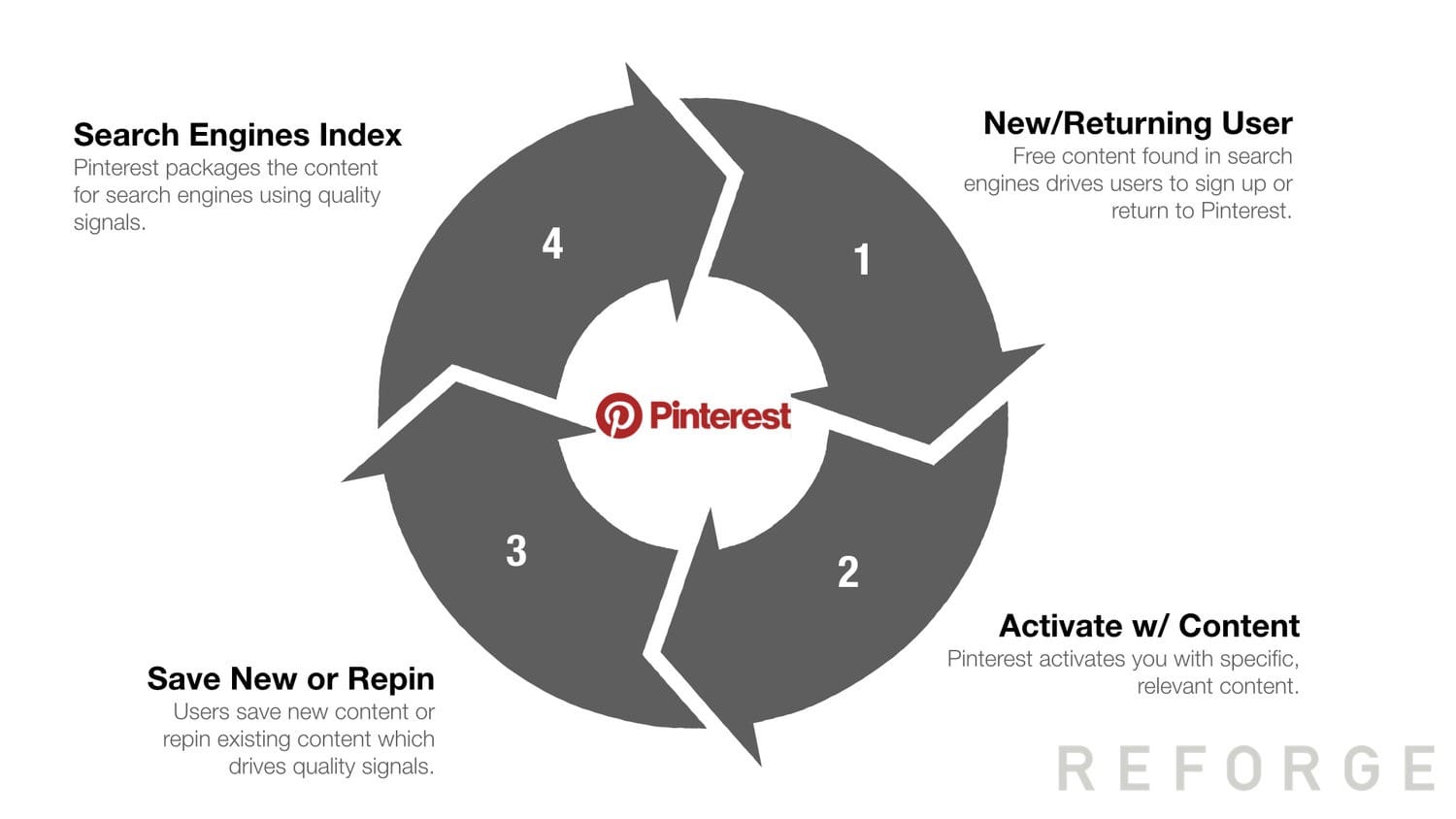
Example of growth loop for Pinterest — Reforge
The growth loop is the generic model, viral loops being only one kind, which is mistaken for being the only way to drive organic growth.
In this article, I will focus on content and viral loops.

Different types of loops — source
—

k-factor calculation example — source
k-factor : A model used to calculate how much virality your growth loop is getting. To be able to drive growth across time, you need a k-factor higher than 1.0
Building a growth loop is an iterative process that can take up to months or even years. Teams need to think about their product, sometimes re-think core features, tweaking them to be more actionable for the user. Finally, even if you drive growth, it won’t ensure the sustainability of your loop.
If you get to a k-ratio* of 0.7, you‘ll hear some noise from your users. But over a long enough period of time, the organic growth will decrease.
More on k-factor calculation here.
1) First step: Understand what content is valuable for your users / for people who don’t have your app
When looking at the content that is created and shared, I like to consider the “gain” for the user.
When thinking about Uber, it’s fairly easy to see that it’s in their own self-interest. Users want a coupon on their next ride — but it gets more complicated with a social product and content-focused apps; sometimes we can talk more about “community gain” that can go 2 ways: altruistic (you want to share a community, offer something to people that matters to you) and inclusion (you want to be able to feel part of a community, create a community for you).
You can think about this as an X-axis : this is what we want to understand deeply when thinking of the users’ behavior around content and shares.
The Y-axis, should be focused on the friction. The more friction, the harder to make the loop works — which is not always true as, sometimes, adding friction can be helpful to build a better loop (e.g.: When Snapchat started, the sharing mechanism was really hard as you need to install the app to see the user’s content, you don’t know what to expect until you have the app).
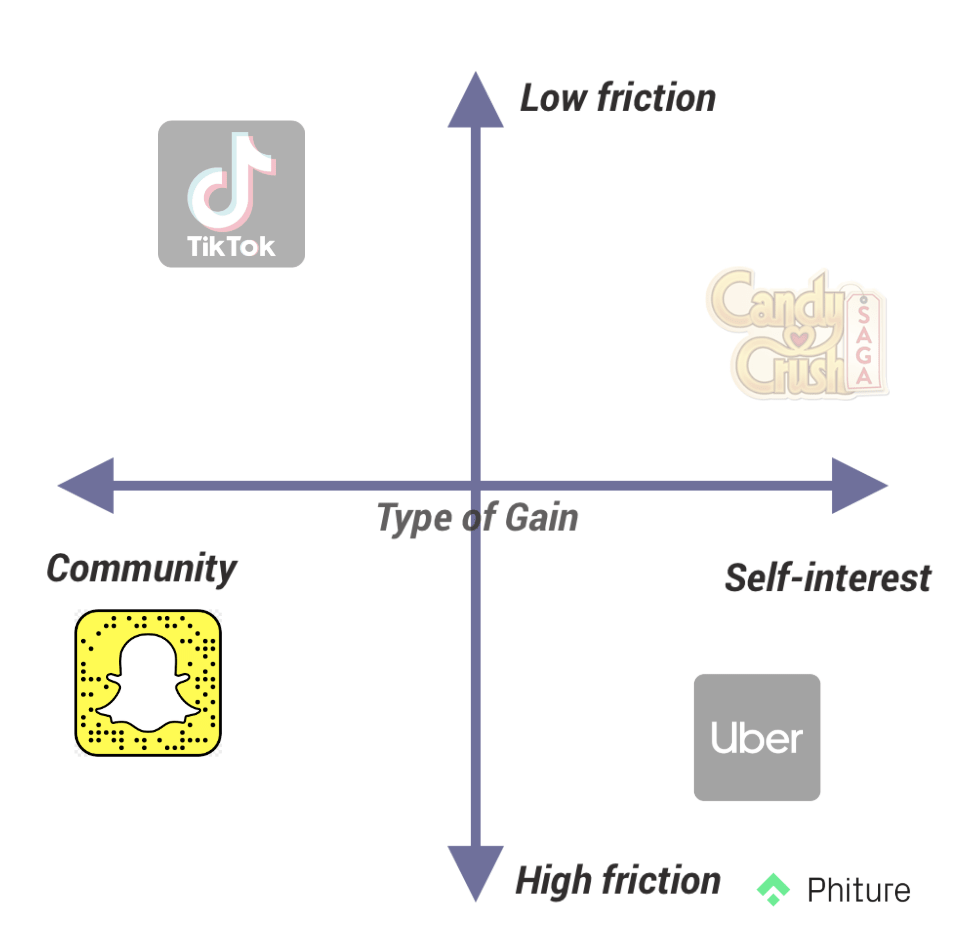
Each growth loop is different, the gain & level of friction is as important as the mechanism itself
Understanding what users are interested in and why is the best way to define from which angle you should approach when building incentives for your loops.
Because it’s not only about your users, but the audience that could benefit from your content, it’s also important that you consider the gain on both side of the loop.
You should think about the value of the content in your product, and how valuable the initial content discovery is. That’s where you should focus: both helping users crafting better content and make content discovery memorable (can equal to the aha moment for non-content driven apps).
2) Create an incentive or an unconscious trigger to get users to share your content
Once you understand how users are currently interacting with your product, and why they’re doing it, you can think about different ways to drive this behavior more for other segments and encourage it for users already doing it.
Whereas if you’re working on a content loop and you’re trying to get as many new content creations as possible, or it’s a referral loop and your focus is around how many users share the app with others — you’ll have a common goal: improve each step of the funnel.
At Phiture, we like to ask ourselves questions around the user behavior: from natural usage habit to define the frequency of our messages, to psychological triggers to define our voice and incentives.
Using psychological triggers is an approach focused on what drives your user to a specific engagement within your app. What you’re trying to do is to get them emotionally involved with your product or message.
You want to think about how to integrate these triggers within your product, make the user feel emotionally triggered — based on why they are engaging with the product.
A quick example will be sharing messages: When a user shares an app, they usually don’t bother writing a custom message — it’s a chance for you to craft a “sample” message that the user can decide to keep.
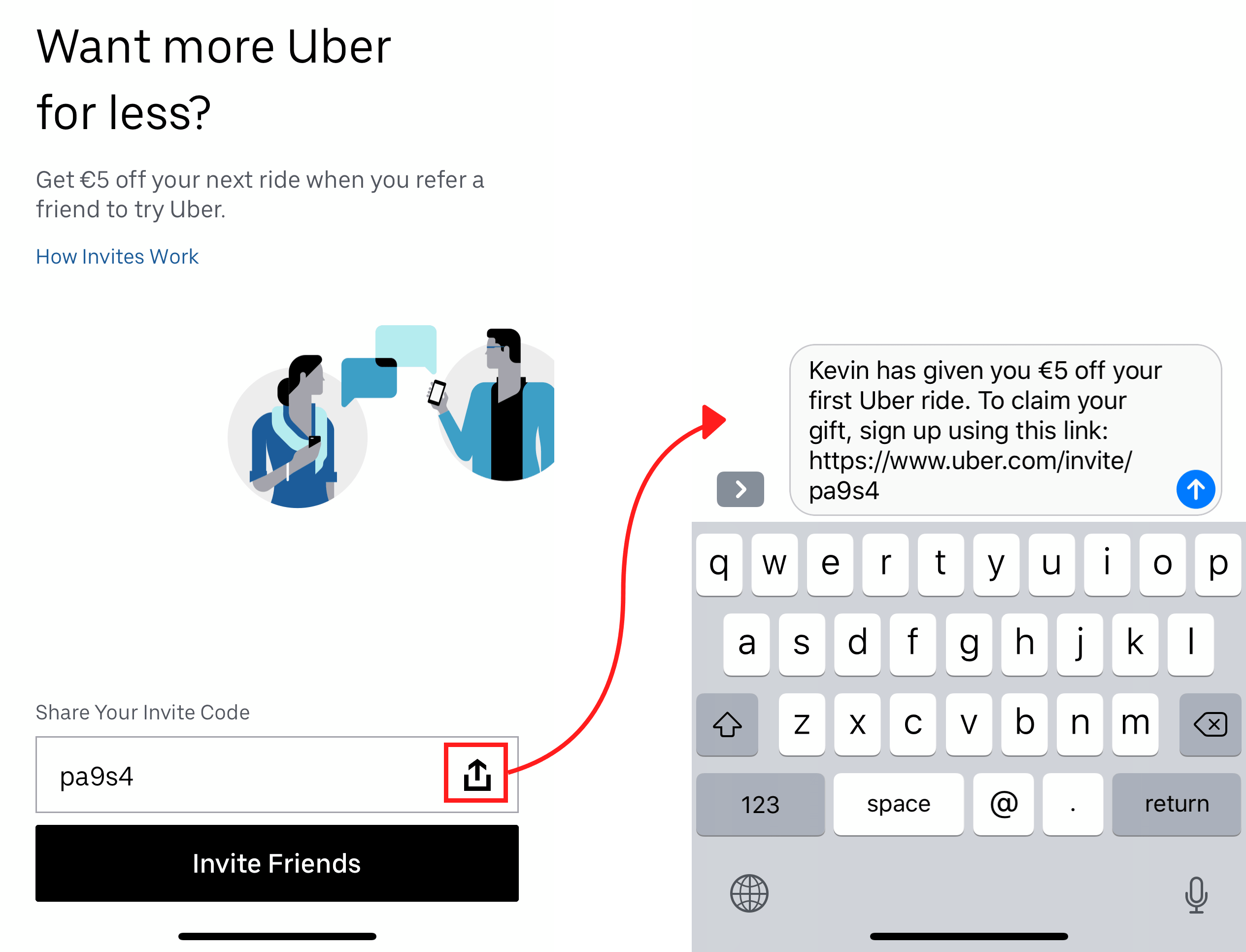
Uber pre-filled invites with promo code when you share the app.
Uber keeps it standard, but this is a great place to iterate and experiment on different psychological triggers.
3) Track how users are interacting with your content
Being able to understand the efficiency of your growth loop is a key factor in how successful you’ll be in driving organic growth.
Depending on what type of growth loop you’re trying to optimize, you’ll have different steps that will be crucial in terms of tracking as you don’t want to only see the success rate, but also want to understand the conversion rate between each step — that’s where you can focus to optimize step by step, one at a time.
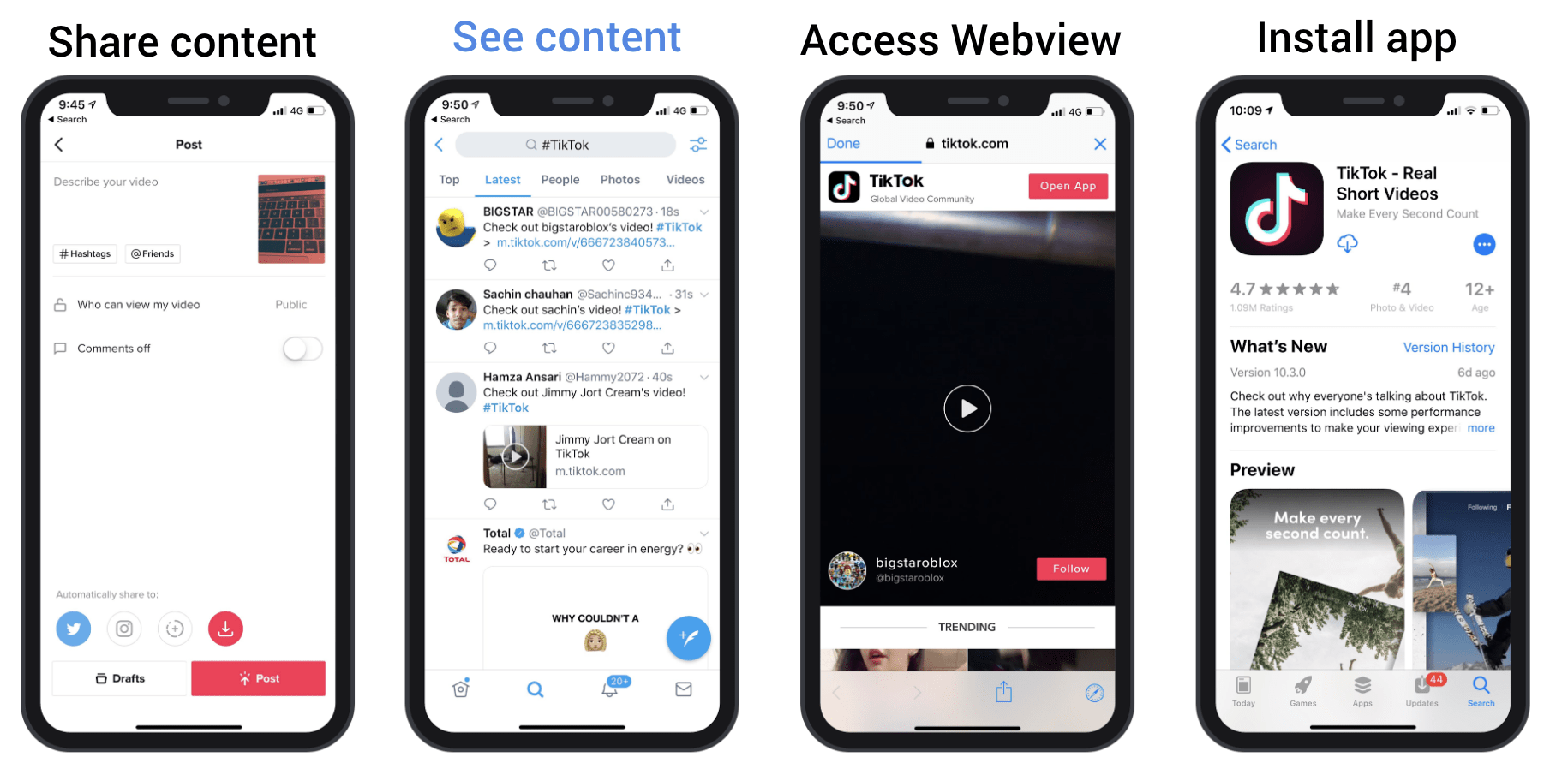
Sharing funnel for TikTok, from the content creation to the app store page.
It’s only by tracking each step that you’ll be able to understand where you should focus.
In TikTok for example, you can see that their sharing incentive is well integrated on the content creation funnel. The share message is automatically populated for the user, then users can access the content within a webview before getting redirected to the app store.
Depending on where you see the biggest drop-off, you’ll want to try to move this conversion metric by improving the specific step. For example, if the webview page has a really low conversion rate, maybe we could focus on improving the CTA / Value proposition for the user, or allow him to have a better experience on the webview — actually, by adding some friction in this step, you may see a better conversion rate (e.g.: limiting the number of videos available before you have to install the app).
I highly recommend going for a product analytics tool that will allow you to look at this funnel as any other of your product funnel, such as Amplitude or Mixpanel.
Tracking your links will also give you more capability in understanding how many users share, and how many users click on each link. A good way to approach this is to use tracker links (dynamically generated for each user) & analytics (Branch, Appsflyer and Adjust offer this).
In some cases, you’ll have to cross-reference data from other sources (e.g.: if you have an app and some content is available on the web). This data will be aggregated on a weekly/monthly basis and will allow you to see the performance of your loop from a wider perspective.
If your setup is focused around individual shares (you have a unique promo code that gets your friends discount as you do), you may need to build something fairly complex (link generator within your app that reward the user every time someone create an account from this specific link).
This sounds pretty complex because it is. Branch offers a deeplink and referral feature that can reduce the pain of building something that complex. You can actually build your complete viral features just using their API.
4) Leverage your real estate to drive shares and content creation
A growth loop by itself can drive exponential growth if well executed, but sometimes it needs some help. From the different success stories we see around loops, the best in class often require CRM in order to improve.
Matching your CRM strategy to your product focus is often a great way to drive organic growth and sustain it across time.
Refind referral email for their segment of engaged users
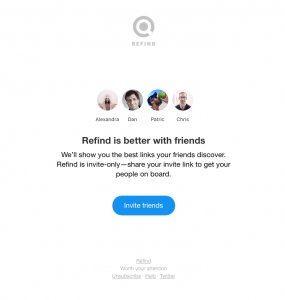 Email is still a great channel to communicate with your users, get them excited about product updates and engage with your app. You can also leverage this channel to bring greater awareness of your growth loop.
Email is still a great channel to communicate with your users, get them excited about product updates and engage with your app. You can also leverage this channel to bring greater awareness of your growth loop.
There are different approaches, that will mainly depend on the core value of your app and how you’re communicating with your users.
You can focus on engaged users that are already happy with your product and will be more keen to share the app / create content.
Push messages can help you leverage your growth loop in many ways:
- Rewards for users that have been part of the loop. The main example is activity notifications. If the user creates content in the app and sees people liking this content and/or interacting with it, it will drive satisfaction to the user that may turn into other shares + new content creation.
- Inclusion: Getting users aware that friends joined the app and/or are creating content in the app will get them emotionally involved in the product.
In-app messaging is often underlooked as a channel to drive engagement but can be incredibly effective when used efficiently.
Coupling In-app messages with deeplinks allows you to redirect users to your content creation funnel, referral page, promo code, etc.
You can also use native sharing features using deeplinks with a pre-filled sharing message, or even generate a pre-filled email/SMS. More about native schemes here.
5) From Loop performance measurements to funnel improvement
Optimizing the loop is mandatory if you want to be able to improve the output side of the loop.
Your loop will probably be linked to one or two feature within your app, that’s where you want to get started. You want to understand how many users are seeing the first step of the funnel, how many users are aware of this mechanism.
By understanding how many users can get in the loop, it will be easier to understand how much impact you can do by just getting more people aware of it (in-app message is a great channel to do that).
The second step is to understand how you’re performing at each step of the funnel:
From all users who click on your share button, how many are actually sending a message to their friend? From all the messages sent to people, how many actually click it? From all the clicks, how many users convert in your page?
Using enabling tech like Adjust, Appsflyer or Branch is mandatory for you to understand all the steps in the funnel. Some may be harder than others to track, but every step is valuable as you can move by a significant number the conversion overall.
Conclusion
- Having a good tech stack is a necessary step to be able to efficiently track each step of your growth loop funnel.
- CRM is an overlooked opportunity to improve your growth loops by adding new touch-points with your userbase.
- You should consider psychological triggers as a way to improve your content creation funnel / viral loops incentives.
- It’s only by going through multiple iterations and experiments in your core product features that you’ll be able to leverage your app as an effective organic acquisition source.
Cheers.⚔️🧙♂️













